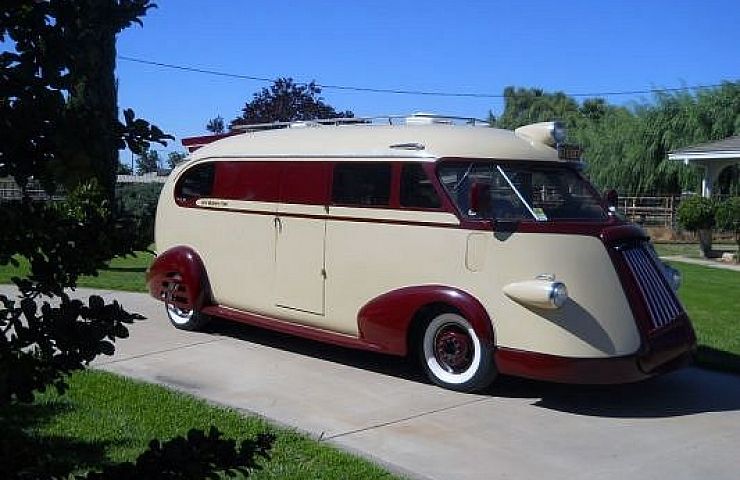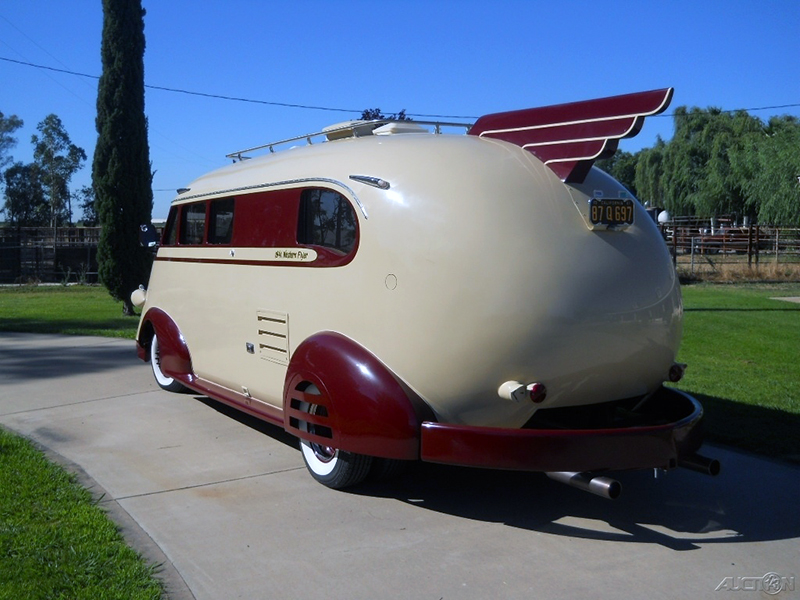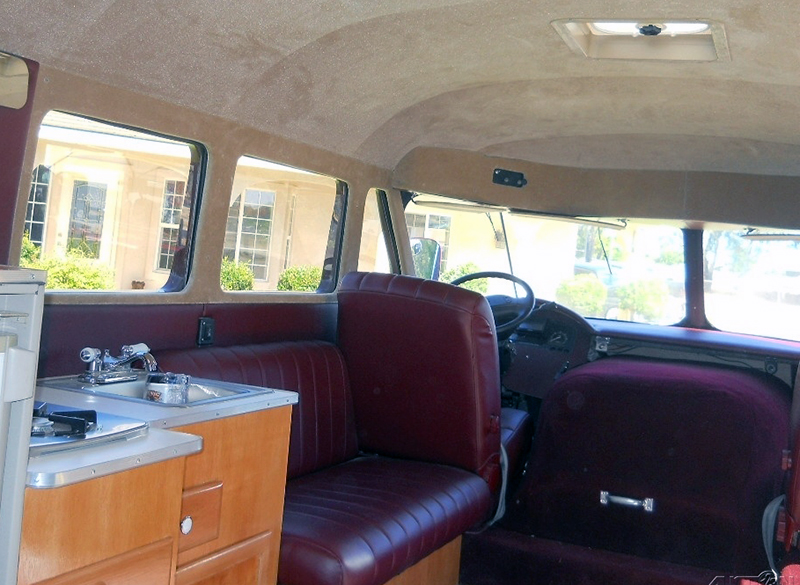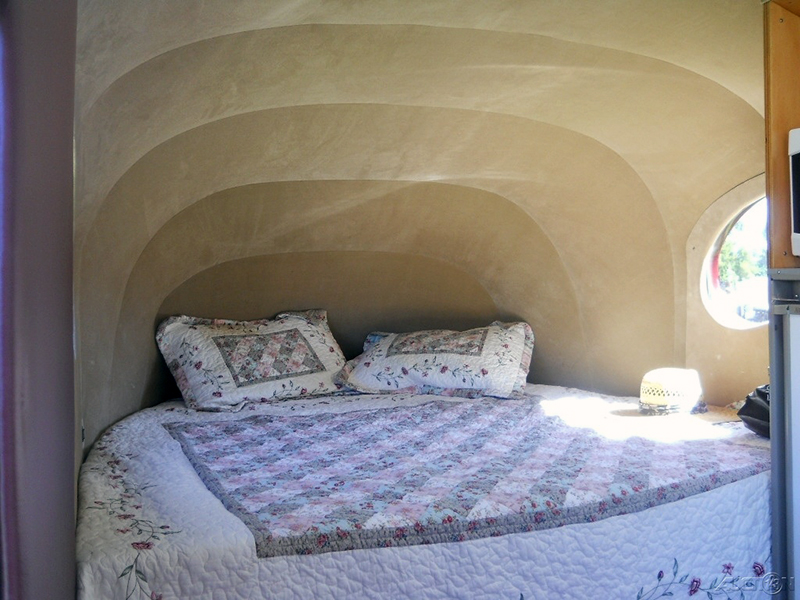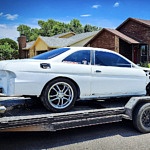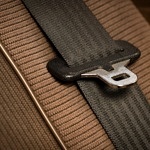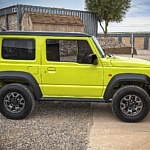In a career that spanned five decades, industrial designer Brooks Stevens created about 3,000 designs for nearly 600 clients. His designed everything from cigarette lighters to beer bottles—as well as an extraordinary array of vehicles. Those designs include the iconic front-fender design for Harley-Davidson motorcycles, the ultra-kitschy Oscar Mayer Wienermobile, and the 1941 Western Flyer recreation vehicle now offered on eBay Motors.
The Western Flyer RV listed on eBay is reportedly one of only three that were ever produced. Steven worked on a number of recreation vehicles and so-called mobile homes throughout his career. “He was best at understanding how products were meant to function and modifying them so the customer could use them more easily,” said Gary Wolfe, curator at the Milwaukee Institute of Art and Design, in Stevens’s 1995 obituary in The New York Times.
The First Land Yacht
Five years before working on the Western Flyer, Stevens designed the streamlined Zephyr Land Yacht, using an International chassis and a trailer reportedly based on the Curtis Aerocar. These kinds of slick aerodynamic designs for trailers were around since the 1930s—and have since become identified with Airstream. Stevens’s RV designs featured large bulbous shapes, giving them a blimp-like appearance.
Stevens would later design delivery vehicles (reminiscent of today’s motorhomes) for companies such as SC Johnson (the wax company), Campbell Baking Co., and Miller Brewing Company. The idea was for the delivery vehicles to double as traveling sales booths. (By the way, Brooks Stevens is also credited with convincing the Miller to switch from brown bottles to clear ones—to support the marketing of its product as “the Champaign of beers.”)
In 1959, Brooks opened a 12,500-square-foot automotive museum in Mequon, Wisc., to display his designs and his collection of classic cars. Yet, one of the surviving Western Flyers—probably one built for SC Wax—was apparently not among the collection. In 2011, it was discovered by Howdy Ledbetter, a hot-rod customizer. “I had a good front half and a good back half,” Ledbetter said, in an article on Hemmings.com. “They were kinda all together, but all rotted out.”
Ledbetter took seven months to piece the vehicle back together, lengthened the nose with a 1941 Ford COE grille and adding a 1941 Buick headlamp above the windshield. The eBay listing also reveals a long of list of modern enhancements including: a Ford 460 cubic-inch engine; a new heavy-duty Ford automatic transmission with overdrive; a new super-duty 40-foot motor home chassis with additional sway bars; and disc brakes. The vehicle won Best of Show at the 2014 Good Guys in Pleasanton, Calif.

A 1993 Hot Wheels of the Oscar Mayer Wienermobile.
Stevens’s auto museum, which closed in 1999 after his death, was intended to preserve his legacy and most iconic creations, including the Jeep Wagoneer and sporty Jeepster; engine designs for Briggs and Stratton; the 1949 Harley-Davidson Hydra-Glide; the 1952 Excalibur sports car; the 1962 Gran Turismo Hawk for Studebaker; and the funky 1930s-styled Excalibur built in the 1960s and 1970s. (See the 2003 book Industrial Strength Design: How Brooks Stevens Shaped the World.)
The museum reportedly also served in the 1980s as the production facility to build a fleet of six Wienermobiles—using a Chevy van chassis—for Oscar Meyer’s “Hotdogger” marketing program.
If that’s a dubious distinction, so is Brooks Stevens’s role in popularizing the term “planned obsolescence,” the practice of intentionally producing consumer goods to rapidly become obsolete by making them less durable than possible, frequently changing the design, or cutting off supply of spare parts. Stevens saw it as a virtue, explaining it as “instilling in the buyer the desire to own something a little newer, a little better, a little sooner than necessary.”

